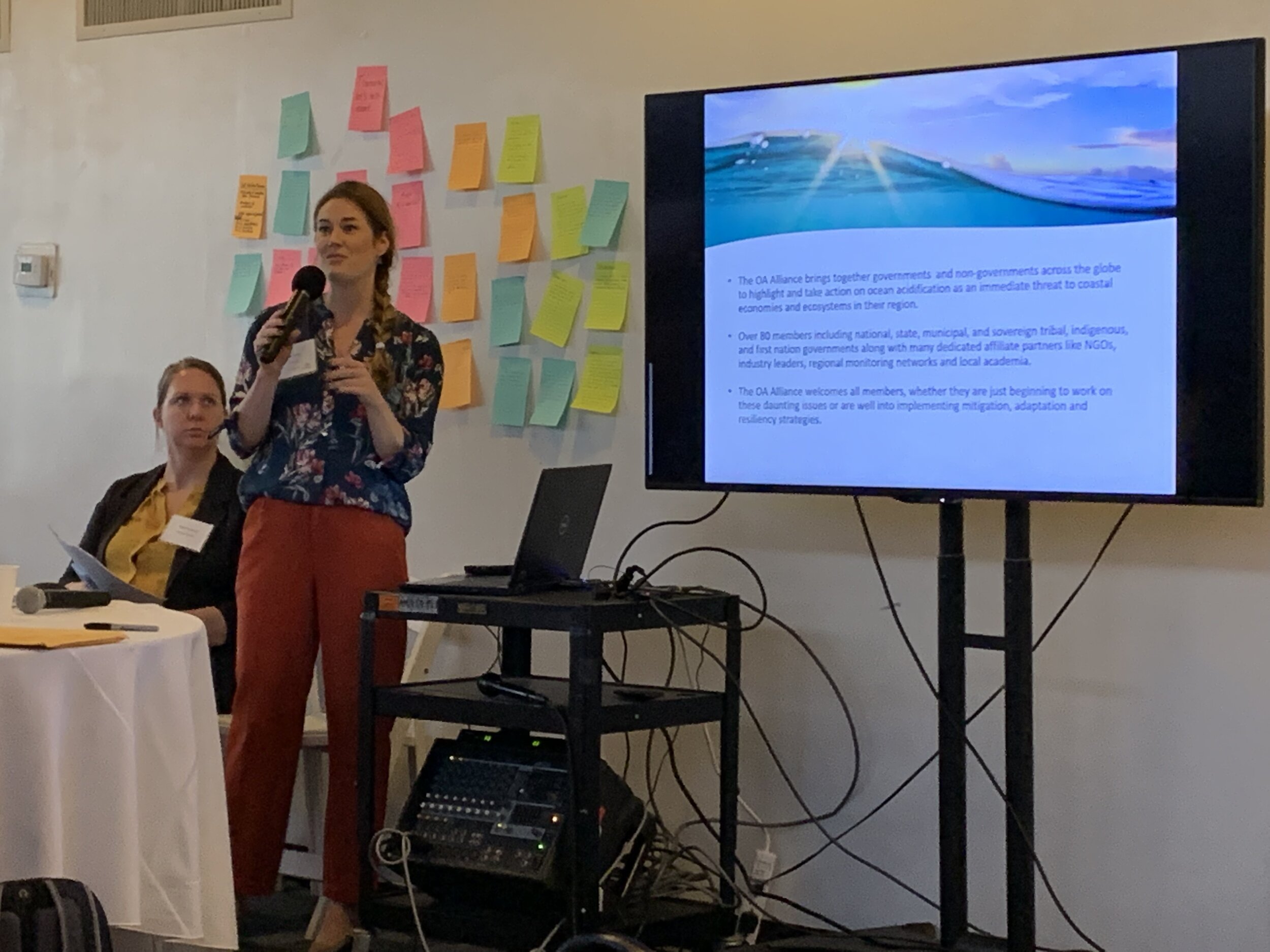
United States of America
The United States federal government and coastal states have played a key role in documenting and responding to OA, generating best practices and learnings domestically and internationally. Advancing domestic OA action will better inform decision making about national mitigation, adaptation, and resilience goals.
Management of OA requires a nuanced understanding of ocean and coastal acidification and the relationships - or tradeoffs - between establishing new management tools and leveraging existing programs. U.S. governments and regional partners are collaborating to identify and prioritize gaps in knowledge that will inform local intervention strategies and provide managers with a more complete picture of local drivers, conditions, risks and solutions.
In 2009, Congress passed the Federal Ocean Acidification Research and Monitoring Act (FOARAM) that led to the creation of NOAA Ocean Acidification Program (OAP); expanded nationwide research and monitoring, enabling regions to develop baseline knowledge and information sharing.
In 2016, the three West Coast U.S. States of California, Oregon and Washington launched the OA Alliance, bringing together governments and non-government partners to share information and advance the creation of OA Action Plans. U.S. States and Tribal governments have been transforming climate-ocean policy ever since.
In 2020, the Coastal Communities Ocean Acidification Act was ratified. The Act supports science for informed decision-making and policies that advance regional solutions and identifies the Coastal Acidification Networks as key components of regional synthesis, education, and outreach. Two years later, NOAA OAP began work on the U.S. National OA Vulnerability Assessment Report that considers the vulnerability of coastal communities to acidification in seven different regions – each detailed in its own chapter.
In 2022, the U.S. joined the International Alliance to Combat Ocean Acidification (OA Alliance), committing to create a National OA Action Plan and calling upon other national governments to take domestic OA Actions. This has resulted in the creation of the National OA Action Planning Leadership Circle.
In 2023, the U.S. government released President Biden’s Ocean Climate Action Plan, followed by the U.S. National OA Action Plan. NOAA invested $17 million in 2023 to directly support its Ocean Acidification Program. NOAA’s OAP also advanced domestic climate-ocean communications through the collaborative project, “Exploring Our Changing Ocean: Impacts and Response to Ocean Acidification in the U.S.A.” to support education, outreach and calls to action that associated aquarium partners and science institutions can utilize across larger climate change narratives and outreach efforts.
EXPLORE our NATIONAL projects and resources:
A 2 DAY WORKSHOP HOSTED BY THE MID-ATLANTIC COASTAL ACIDIFICATION NETWORK AND THE OA ALLIANCE, 2024
TURNING THE TIDE: BIDEN ADMINISTRATION LEADERSHIP ON OCEAN CLIMATE ACTION & RECOMMENDED NEXT STEP, 2024
U.S. NATIONAL OA ACTION PLAN, 2023
U.S. STATES OA ACTION PLANS, 2023
EXPLORING OUR CHANGING OCEAN: IMPACTS AND RESPONSE TO OCEAN ACIDIFICATION IN THE U.S.A, 2023
U.S. STATE TO STATE MEETING, CLIMATE WEEK, 2023
OCEAN ACIDIFICATION: INSIGHT FOR POLICY AND INTEGRATED MANAGEMENT, SPECIAL ISSUE OF COASTAL MANAGEMENT JOURNAL, 2021
U.S. STATE OA ACTION PLANNING IN THE MID-ATLANTIC, 2021
U.S. STATE TO STATE MEETING, VIRTUAL, 2020
U.S. STATE-TO STATE WORKSHOP AT CLIMATE WEEK, 2019
OA Alliance team lead:
Edith Mari
UN Decade of Ocean Science Programme Lead & U.S. Policy Consultant
Email: emari@unfoundation.org












